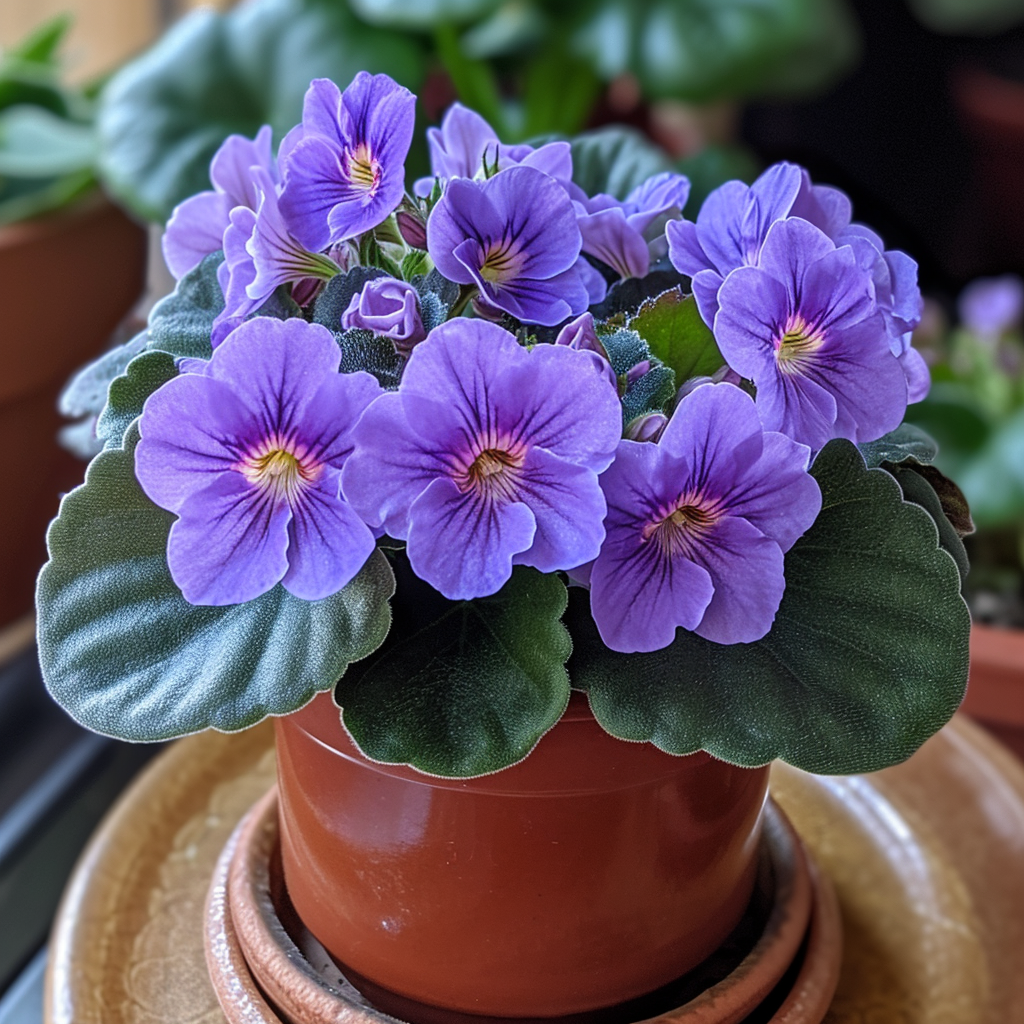Most houseplants are revered for their gorgeous, green foliage and their ability to help filter and purify the air within your home. But with African violets, their flowers steal the show. While it’s assumed that the plants typically come in shades of violet and purple, the flowers actually come in pink, red and white as well.
Thought to be somewhat finicky, they actually are fairly easy to grow if you learn the following basics on how to care for them.
1. Plant them in potting soil
African violet plants need a light, airy medium around their roots to allow for good air circulation. It’s best to buy a commercial potting soil or to make your own. Try mixing extra peat moss and vermiculite or perlite into the potting soil to make it even lighter.

2. Give them the right growing requirements
Direct sunlight will burn the velvety leaves on an African violet. They prefer bright, indirect sun from a south- or east-facing window. In winter months, it may be necessary to put your plants under a grow light to give them the exposure they need to bloom. Contrary to popular belief, they do not grow best in warm conditions. Like other houseplants, they do well at temperatures between 55 and 75 degrees Fahrenheit. Avoid placing them in drafty areas where the nighttime temps drop below 50-55 degrees Fahrenheit.

3. Keep the soil moist
African violets should be watered as soon as the top of the soil feels dry to the touch. Use only room temperature or slightly warmer water when watering your plants, taking care to keep water off of the leaves. Water that is cooler than the leaves will cause leaf spotting. They like fairly humid conditions; if you live in a dry climate, group plants together to create a micro-environment that stays a little moister, or place pots on a tray of pebbles that is kept watered.

4. Fertilize often
To keep your African violet blooming, it’s important to keep it well fed. A low-nitrogen, high-phosphorus fertilizer blend encourages bloom production while limiting vegetative growth. Many violet-specific products are available on the market, but it isn’t necessary to purchase one if you can’t find one locally. A well-balanced, high-quality fertilizer works just as well. It is recommended to fertilize plants lightly every time they are watered to provide continuous food.

5. Remove old blooms
African violets bloom constantly throughout the year if cared for properly. One of the most important tips is to pinch off or remove spent blossoms. This encourages the plant to produce new buds instead of trying to send its resources to the dead tissue.

6. Re-pot plants periodically
Over time, the nutrients in the potting soil become depleted as the roots absorb them for use by the plant. Refresh the potting mix by re-potting your African violets once or twice a year. More often than not, the pot size doesn’t need to change and won’t exceed 4 to 5 inches in diameter.


You can certainly see your expertise in the paintings you write.
The sector hopes for more passioate writers like you who aren’t
afraid to mention how they believe. All the time follow your heart.